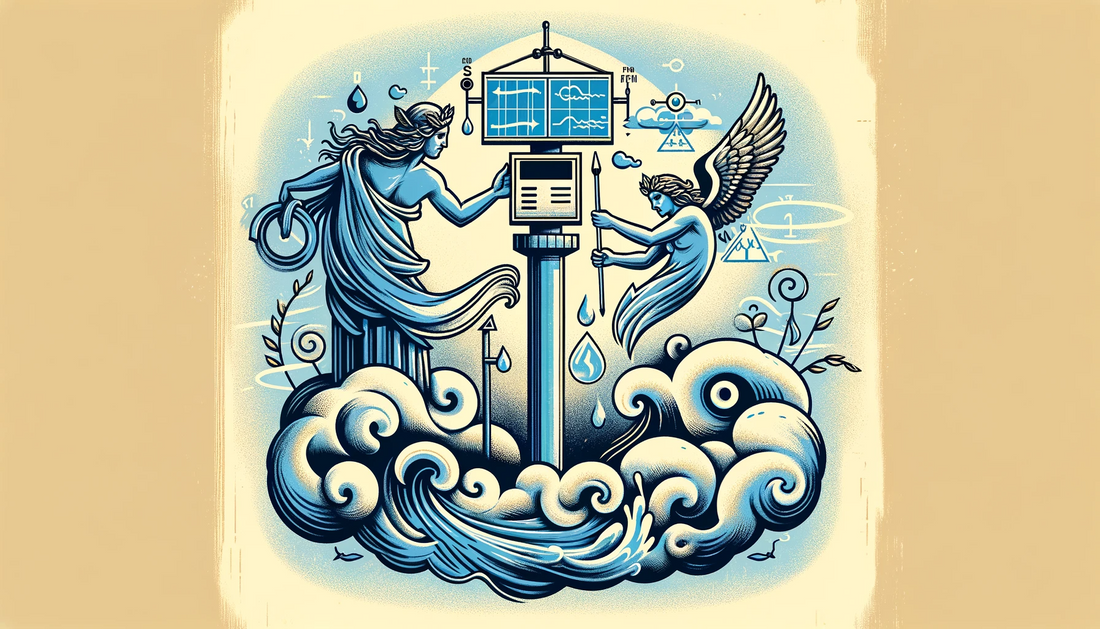
The Myth of Evapotranspiration in Irrigation Efficiency
Share
The irrigation industry, guided by traditional methods and reinforced by programs like the EPA's WaterSense, has long relied on ET as a cornerstone for determining irrigation schedules. However, a closer examination reveals that this approach might not be as effective as once thought, raising questions about the adaptability of regulatory frameworks to emerging technologies.
Weather Stations and ET in Irrigation
Weather stations are pivotal in providing data for ET calculations, calculations which estimate, estimate the amount of water lost from soil through evaporation and plant transpiration. This method, while useful, oversimplifies the complex interaction between various environmental factors and plant water needs. It assumes a one-size-fits-all approach to irrigation, potentially leading to inefficient water use. In the end, using this method is simply a very educated guess, but just a guess, only a guess, and will always be just that, a guess.
The Limitations of ET as an Irrigation Metric
Evapotranspiration, though a significant component of the water cycle, does not account for the diverse soil types, plant species, and microclimates present in different landscapes. Like guesswork, this can lead to a generalized approach to irrigation, which can result in over or under-watering, thereby impacting plant health and water conservation efforts.
EPA's WaterSense Program: A Case Study
The EPA's WaterSense program, designed to promote water efficiency, endorses products like irrigation controllers that tailor watering schedules based on local weather and landscape conditions. While this initiative is commendable, it primarily focuses on ET-based controllers, potentially overlooking more direct and efficient methods of measuring soil moisture.
Governmental Challenges in Adopting New Technologies
Governmental programs, while instrumental in setting standards for various industries, often encounter significant challenges in integrating cutting-edge technological advances. This lag primarily stems from inherent bureaucratic processes that are characteristic of large organizations. These processes, although necessary for ensuring due diligence and public accountability, can result in slower adoption of new technologies.
When innovative technologies emerge, like soil moisture sensors, they bring with them new data, methods, and efficiencies that existing regulatory frameworks might not immediately accommodate. For example, the rapid development in sensor technology and data analytics has revolutionized many fields, including irrigation. However, government programs, constrained by existing regulations and lengthy update cycles, may struggle to keep pace. This disconnect between market innovation and regulatory response can lead to a gap in the implementation of the most effective and sustainable practices.
Additionally, the process of updating guidelines and standards in government programs involves extensive reviews, public comments, and often, political considerations. These steps, while important for creating balanced and well-considered policies, add to the time it takes for new technologies to be recognized and incorporated into official guidelines.
As a result, there is often a time lag between the advent of new technologies in the market and their adoption in government-regulated practices. This can lead to a scenario where industries are ready to implement more advanced, efficient methods, but are limited by outdated regulatory frameworks. Addressing this gap is crucial for ensuring that industries, such as irrigation, can fully benefit from technological advancements, leading to improved outcomes in areas like water conservation and environmental sustainability.
The Need for Advanced Irrigation Technologies
Advanced technologies like soil moisture sensors provide a more accurate and direct measurement of the soil's water needs, ensuring that irrigation is precise and efficient. These tools represent a significant advancement over traditional ET-based methods, offering a solution that is more in tune with the actual water requirements of plants and soil.
In contrast to the traditional reliance on weather stations for evapotranspiration calculations, soil moisture sensors offer a more direct and efficient approach. These sensors excel in measuring the actual field capacity of the soil, providing real-time data on soil moisture levels. Beyond just measuring field capacity, these sensors can also monitor evapotranspiration as it occurs naturally in the landscape. This capability allows for a more accurate and responsive irrigation scheduling, tailored to the immediate needs of the soil and plants. Unlike weather station-based calculations, which estimate evapotranspiration based on general climatic data, soil moisture sensors deliver precise, site-specific information, leading to more effective water usage and healthier plant growth. This method represents a significant step forward in irrigation technology, offering a more sustainable and scientifically sound approach to landscape management.
Overlooking Soil Moisture Sensors in the EPA WaterSense Program
The Need to Reevaluate
The irrigation industry's reliance on evapotranspiration for adjusting irrigation runtimes, backed by governmental programs like EPA's WaterSense, needs reevaluation in the light of modern technological advancements. A shift towards more direct measures of soil moisture and plant water needs could lead to more efficient and sustainable irrigation practices, ensuring better water conservation and healthier landscapes.
